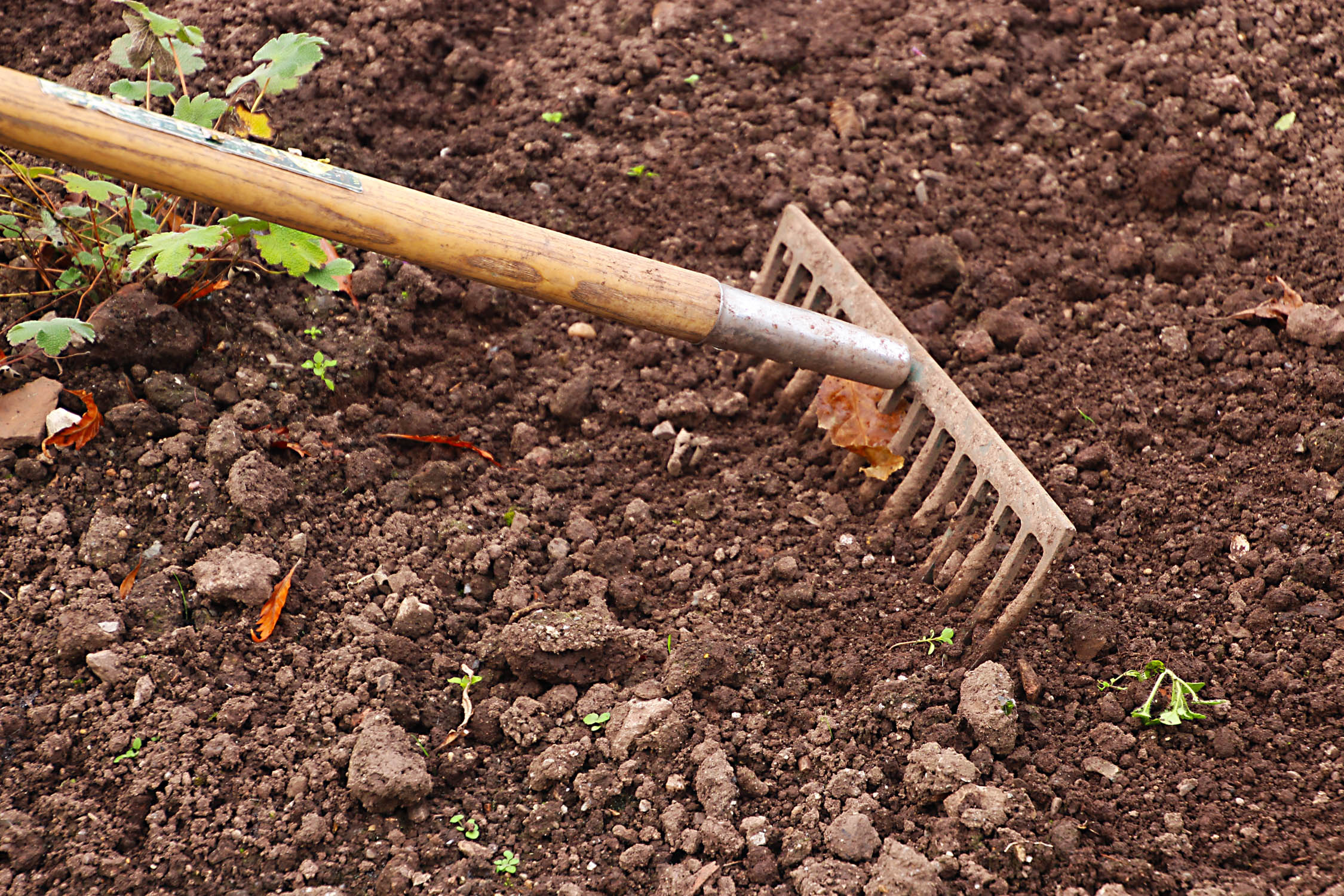
Soil compaction
Healthy soils mean healthy plants with fewer pest and disease issues.
It’s not always obvious that soil is compacted, but compaction can have a negative effect on how plants grow.
Soil is made up of particles of sand, silt and clay. Healthy soil also contains organic matter, and diverse microbial and insect life. As important are the tiny air spaces between the soil particles called pores. Air pores make up as much as half of the volume of healthy soil. These pores allow air and water to move through the soil.
Compacted soil is dense, with few to no air pores. Compacted soil holds very little water and has less biological life. Root growth is restricted and plants are unable to take up air, water and nutrients.
Symptoms of compaction
- Plants show drought symptoms like wilting or dying leaves, even if the soil seems wet.
- Plants are slow to grow.
- Plants have nutrient deficiencies. The most common is iron chlorosis which causes leaves to yellow but the veins remain green.
How does soil become compacted?
- Foot traffic. Ever notice that nothing grows on a path that people or animals use regularly?
- Vehicle traffic: bikes, strollers, cars, etc.
- Construction machinery like graders and backhoes. Often seen where there is infill or new housing construction.
- Storing heavy objects like building materials, firewood, or equipment - even temporarily storing something heavy can compact the soil it is resting upon.
- Sidewalks and driveways – soil underneath these areas are compacted making it impossible for roots to grow.
- Rototilling pulverizes soil and destroys how well soil holds together. Over time soil becomes thin, has a hard crust and will compact at lower levels.
- Mixing sand into clay soil to loosen it has the opposite effect: this can make your soil like concrete.
- All of these activities cause worse compaction when soil is wet.
What can I do about compacted soil?
Restoration is possible but it is a slow process that works best on mildly compacted soil. If your soil is hard as rock, it may be better to remove 15 to 30 centimetres (6 to 12 inches) and replace with new topsoil and top with mulch. Use your best judgement. Otherwise, here is what to do:
- Apply 12 centimetre (5 inch) layer of mulch around trees and shrubs, and on to exposed soil in garden and vegetable beds.
- Apply less water in compacted areas because of reduced water holding capacity. Water will run off.
Trees and shrubs:
- The root systems of trees extend far beyond the drip-line. Avoid planting trees close to sidewalks or driveways, or choose smaller specimens like dwarf varieties.
Vegetable beds and gardens:
- Stop rototilling. Instead, make paths in vegetable gardens permanent and mulch exposed soil.
- Plant a cover crop like annual ryegrass, winter rye or winter wheat. The roots will help to loosen the soil. Mow instead of pulling out the cover crop at the end of the season, allowing the roots to break down naturally. The stubble will help to trap snow.
Lawns:
- Consider installing permanent sidewalks on top of well-worn paths.
- Remove thatch in excess of 2.5 centimetres (1 inch). Aerate lawn by removing plugs of soil. Leave plugs on lawn.
- Use a mulching mower. Set blade to the highest setting. Leave clippings on the lawn as mulch.
- If you need to re-seed, apply a new layer of topsoil first.
Sources
https://www.nrcs.usda.gov/Internet/FSE_DOCUMENTS/nrcs142p2_053278.pdf

